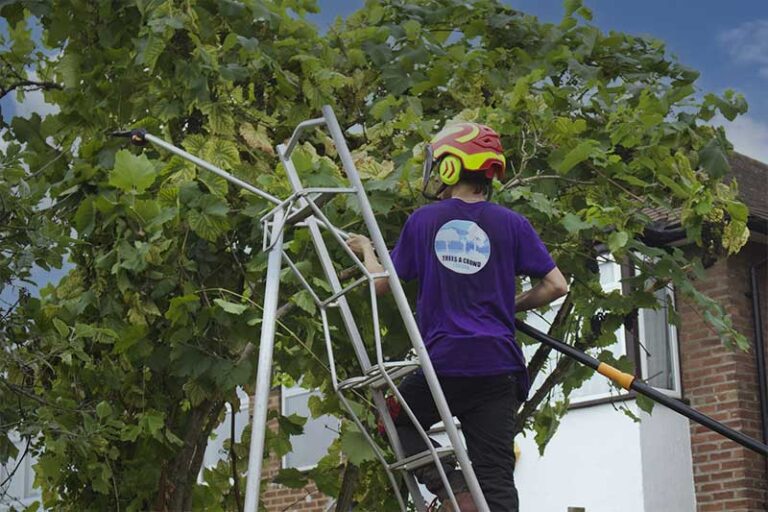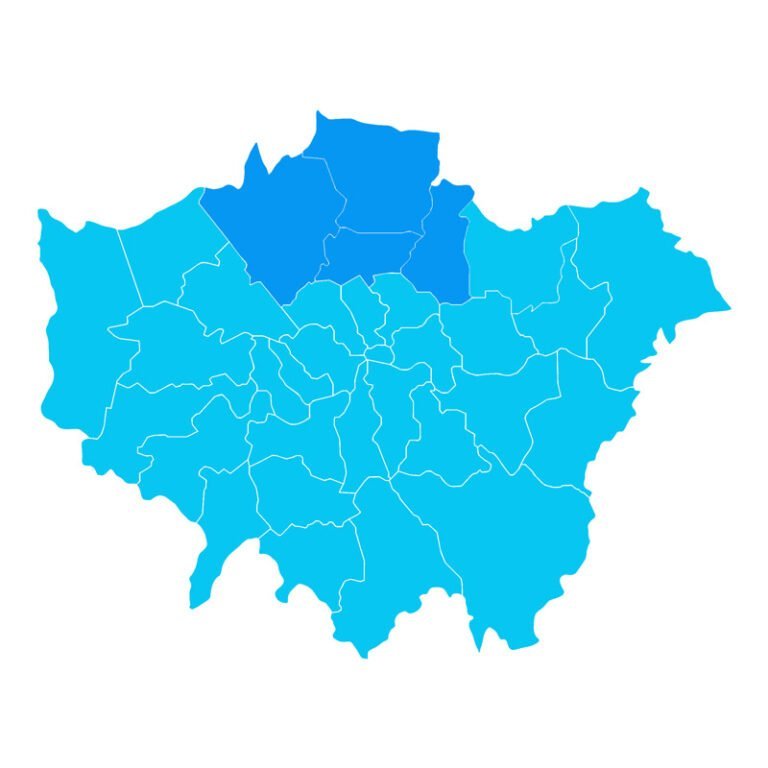Tree Pruning
Experts in all aspects of tree pruning, our tree surgeon services cover crown reduction, thinning, crown lifts, and pollarding.

Crown Reduction
A crown reduction is suitable for most trees that need work on. This is the act of taking making a tree smaller all round by carefully pruning the tree to reduce the height and spread from the tree. To keep the tree in good health and shape we carefully select which branches to remove, and by leaving growth points on the tree. Just to name a few, crown reductions are useful for allowing more light to penetrate the ground below and surrounding areas as well as to keep them in shape or to remove some weight from less healthy trees to ensure they’re safe.
Formative Pruning
With the process of formative pruning, we can compel trees to grow in certain directions and shapes and with thicker branches. This form of pruning is undertaken and is most effective on younger trees that have never been worked on before. One common appliance of this is with fruit trees, pruning fruit trees in particular ways can control the amount of fruit they bare in the the future.
Crown Thinning
If you opt for our crown thinning service, one of our expert arborists will carefully choose selective branches inside the canopy of the tree, such as deadwood and unhealthy branches or rubbing branches to name a few. This will allow more light to penetrate through the tree to the lower limbs and also the ground below and also promotes healthy new growth making the tree stronger.
Crown Lift
A Crown Lift entails removing the lower branches from the stem of a tree and any drooping parts like on weeping willows, to ensure x amount of meters clearance from the ground below. This will allow for space for vehicles, headroom and also allows more light to penetrate the ground. With younger trees, this will also encourage them grow taller and straighter, reducing their lower canopy spread in the future.
Pollarding
Pollarding certain species of trees with good stress resilience such as London planes and Limes commonly seen in urban areas is a good way of keeping a tree at a certain size for a number of reasons, one being to stop the roots from growing and causing damage to property. This entails removing all of the greenery on the tree and cutting it quite drastically back to its previous points or desired size. When we drastically remove growth from the tree cutting back it decreases its need for water, thus lets its roots die back. Pollarding won’t look as glamorous as a nice reduction but is a cheaper way to manage trees and can give them a long life. After pollarding a tree, you will soon see they drastically sprout out with new epicormic growth from all of the pollard points and stem. So although they may look quite bare immediately after, they soon bounce back harder!
FAQs
What is tree pruning?
Tree pruning involves selectively removing branches to improve the tree’s structure, promote healthy growth, and enhance its appearance. This can include crown thinning, crown raising, crown reduction, and deadwood removal.
Why is tree pruning important?
Pruning is essential for maintaining the health and safety of your trees. It helps remove dead or diseased branches, reduces the risk of falling limbs, promotes new growth, and can enhance the tree’s shape and appearance.
When is the best time to prune trees?
The best time to prune trees depends on the species and the purpose of pruning. Generally, late winter or early spring is ideal for most trees, as it encourages robust growth in the growing season. However, dead or dangerous branches can be removed anytime.
What types of pruning services do you offer?
Trees A Crowd London offer a variety of pruning services, including crown thinning, crown raising, crown reduction, pollarding, and deadwood removal. Our services are tailored to the specific needs of each tree and client.
How often should trees be pruned?
The frequency of pruning depends on the tree species, age, and growth rate. Generally, mature trees should be pruned every 3-5 years, while younger trees may require more frequent attention to shape their growth structure.
Are your tree pruning services insured?
Yes, all our tree pruning services are fully insured, ensuring your property’s and our team’s safety and protection.
Can you prune trees in conservation areas?
Yes, Trees A Crowd can prune trees in conservation areas. However, specific regulations and permissions are required. We handle the application process to ensure compliance with local council regulations.
What equipment do you use for tree pruning?
Our team uses a range of professional equipment, including pruning shears, saws, loppers, and safety gear. Trees A Crowd also use specialised tools for high or difficult-to-reach branches to ensure safe and effective pruning.
How do I know if my tree needs pruning?
Signs that a tree needs pruning include dead or broken branches, dense or overcrowded growth, branches growing too close to power lines or buildings, and diseased or infected limbs. Regular inspections can help determine the need for pruning.
How can I schedule a tree pruning service?
You can schedule a tree pruning service by contacting us via phone, email, or through our website. Our team will assist you in booking a convenient time for the service and answer any questions you may have.
Areas Covered
Based in North London, we provide our extensive tree care and Tree Pruning services to all towns, villages, and areas within a 30-mile radius of Enfield. Our team of experienced arborists, including certified tree surgeons, are dedicated to ensuring the health and vitality of your green spaces. These areas include:
If you would like to discuss your tree care requirements we would love to hear from you:

